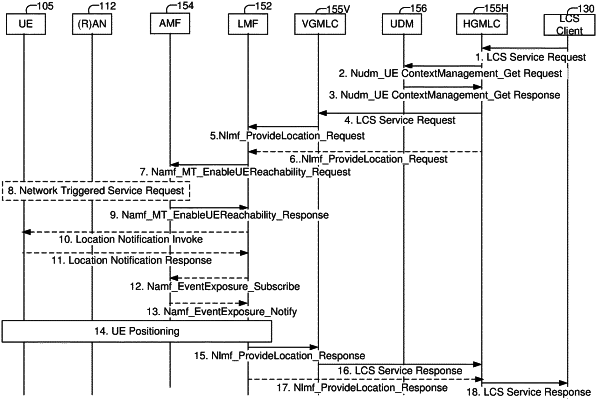| CPC H04W 4/029 (2018.02) [H04W 64/00 (2013.01); H04W 36/0022 (2013.01); H04W 84/12 (2013.01)] | 20 Claims |

|
1. A method for supporting location services for a user equipment (UE) using service based interfaces comprising:
receiving by a first location server a location service request for the UE, wherein the location service request comprises a message for one of a Mobile Terminated Location Request (MT-LR), a Mobile Originated Location Request (MO-LR), a Network Induced Location Request (NI-LR), or a periodic and triggered MT-LR;
communicating between the first location server and at least one other first entity to obtain location information for the UE measured by the at least one other first entity, wherein the communication between the first location server and the at least one other first entity is transferred via a second entity; and
determining a location for the UE based on the location information;
wherein the first location server uses service based interfaces (SBIs), which expose a service to other network functions, and service operations to receive the location service request and to communicate with the at least one other first entity via the second entity, and wherein the SBIs use HTTP protocols to communicate the service operations.
|